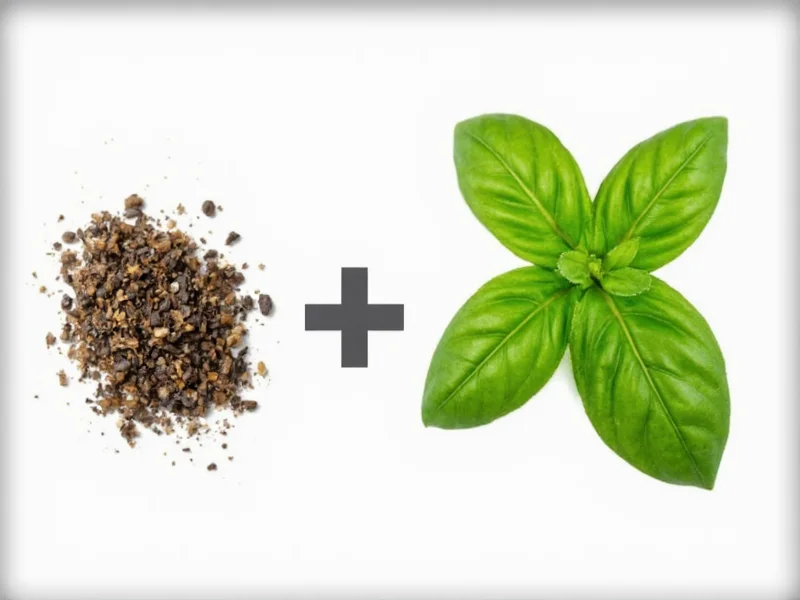Understanding the proper dry basil to fresh basil conversion is essential for maintaining flavor balance in your cooking. Many home chefs struggle with herb substitutions, leading to dishes that are either under-seasoned or overwhelmingly herbal. The key difference lies in moisture content and flavor concentration—dried basil has had approximately 90% of its water removed, intensifying its essential oils and resulting in a more potent flavor profile.
Why the 1:3 Conversion Ratio Works
Drying concentrates basil's essential oils while removing moisture. Fresh basil contains about 92% water, while dried basil contains only about 10%. This significant reduction means dried basil delivers more concentrated flavor in a smaller volume. The 1:3 ratio (1 part dried to 3 parts fresh) has been established through culinary testing as the most reliable conversion for maintaining proper flavor balance in most recipes.
Dry Basil to Fresh Basil Conversion Chart
| Dried Basil | Fresh Basil Equivalent | Common Recipe Application |
|---|---|---|
| ¼ teaspoon | ¾ teaspoon | Salad dressings, light sauces |
| ½ teaspoon | 1½ teaspoons | Marinades, egg dishes |
| 1 teaspoon | 1 tablespoon | Standard conversion ratio |
| 1½ teaspoons | 4½ teaspoons | Casseroles, soups |
| 1 tablespoon | 3 tablespoons | Tomato sauces, stews |
| 2 tablespoons | 6 tablespoons (¼ cup) | Large batch cooking |
Factors That Affect Dry Basil to Fresh Basil Conversion
While the 1:3 ratio serves as an excellent starting point, several factors can influence the ideal conversion for your specific situation:
- Age of dried basil: Older dried herbs lose potency. If your dried basil is more than 6 months old, you might need to increase the amount by 25-50%.
- Recipe moisture content: In wet dishes like soups and stews, dried basil has time to rehydrate, so the standard ratio works well. In drier applications like rubs or quick-cooking dishes, you might need slightly less dried basil.
- Flavor profile differences: Dried basil develops slightly different flavor compounds. It tends to be more earthy and less sweet than fresh, with subtle notes of mint and clove.
- Quality of dried basil: Premium air-dried or freeze-dried basil maintains more volatile oils than mass-produced dried basil.
Practical Application Tips for Dry Basil to Fresh Basil Conversion
When substituting dried basil for fresh in your recipes, consider these professional techniques:
- Rehydrate when possible: For best results in cold applications like salads or dressings, rehydrate dried basil by mixing it with a small amount of warm water or olive oil 15-20 minutes before use.
- Add dried herbs earlier: Unlike fresh basil which is often added at the end of cooking, dried basil benefits from longer cooking time to release its full flavor—add it during the early stages of preparation.
- Taste and adjust: Always taste your dish after incorporating dried basil, as the exact conversion can vary based on your specific ingredients and cooking method.
- Consider the dish type: For delicate dishes like fresh tomato salads, the conversion ratio might need slight adjustment downward, while robust dishes like marinara sauce can handle the standard ratio.
When Not to Substitute Directly
While dry basil to fresh basil conversion works well in many applications, certain dishes benefit from using the form specified in the recipe:
- Pesto: Fresh basil is essential for authentic pesto's vibrant color and flavor. Dried basil won't emulsify properly and lacks the bright notes that define this sauce.
- Garnishes: Fresh basil provides visual appeal and a burst of flavor that dried basil cannot replicate.
- Ceviche and raw preparations: The texture and fresh aroma of basil are critical components that dried basil cannot provide.
Maximizing Flavor with Dried Basil
To get the most flavor from dried basil when substituting for fresh:
- Bloom in oil: Heat dried basil in olive oil for 1-2 minutes before adding other ingredients to release its essential oils.
- Combine with complementary herbs: Dried oregano or thyme can help round out the flavor profile when substituting dried basil.
- Add acid: A splash of lemon juice or vinegar can help brighten dishes using dried basil, mimicking some of fresh basil's vibrancy.
- Store properly: Keep dried basil in an airtight container away from light and heat to maintain potency for up to 1 year.
Common Mistakes in Dry Basil to Fresh Basil Conversion
Avoid these frequent errors when substituting between dried and fresh basil:
- Using equal measurements: Treating dried and fresh basil as interchangeable without conversion leads to overpowering dishes.
- Adding dried basil too late: Unlike fresh basil, dried needs time to rehydrate and release flavors.
- Not accounting for age: Old dried herbs require more generous measurements.
- Overcompensating: When a dish tastes too strong of dried basil, adding more ingredients rather than balancing with acid or sweetness.











 浙公网安备
33010002000092号
浙公网安备
33010002000092号 浙B2-20120091-4
浙B2-20120091-4